WAP has recently got a mail from Frank, FØDUW :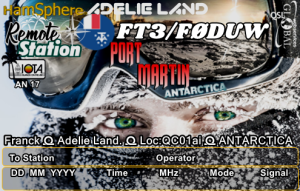
Hello, congratulation for your WAP website. I am on HamSphere 4.0 and we have Antarctica operators but this is virtual via internet. If you know an operator in antarctica who like to be on HamSphere 4.0 please give him the information.
73 de Frank FØDUW who was FT3/FØDUW on French Antarctica
The QSLs attached to the mail (see pictures aside) did capture my attention, there were Antarctic QSLs for calls we never heard on the air!
So, I did ask Frank FØDUW more information about, and here is the answer:
Only amateur radio operator with a call sign can work a remote on HamSphere 4.
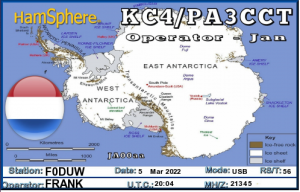 The TX and antenna are for exemple, located in Antarctica but the operator is, for exemple, in Paris. The propagation in Antarctica will be the same of real Amateur Radio. We have dirctional antenna and 100 watts.
The TX and antenna are for exemple, located in Antarctica but the operator is, for exemple, in Paris. The propagation in Antarctica will be the same of real Amateur Radio. We have dirctional antenna and 100 watts.
Operators who are on HS like 14HS10 they can also work from Antarctica with RM1 call sign. (See the picture). So this is virtual but realy like amateur radio. Just no need to travel on the frozen Continent!
73, Frank FØDUW
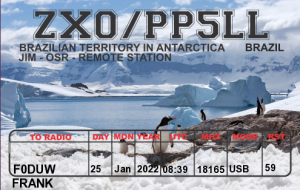 We personally didn’t know that, and now we understood that HamSphere is a subscription-based internet service which simulates Amteur Radio communication over the Internet as designed by Kelly Lindman, 5B4AIT.
We personally didn’t know that, and now we understood that HamSphere is a subscription-based internet service which simulates Amteur Radio communication over the Internet as designed by Kelly Lindman, 5B4AIT.
The simulator allows licensed radio amateurs and unlicensed enthusiasts to communicate with one another using a simulated ionosphere.
The system allows realistic worldwide connections between amateur radio operators as well as radio enthusiasts. In general it is similar to otherVoIP applications (such as Skype), but with the unique addition of characteristics such as channel selection by tuning, modulation, noise effects and shortwave propagation simulation.
We did also ask Mario Fontanella IK4HAQ (ex IK3HAQ) about a strange QSL, forwarded us by Frank FDUW. Mario, kindly reply with his comment:
I used to live in Venice, when I was IK3HAQ. Now I live in Bologna and, there is no way to install antennas from this QTH, I have been looking for solutions to keep my passion for radio communications active and I found HamSphere, a web platform that simulates the HF propagation conditions according to the VOACAP indications, allowing radio amateurs and “radio enthusiasts” to get practice to listening to and virtually, connecting other stations present, both physically and /or remotely, in various locations around the world.
These activities are not connected to the real Ham radio activity. Hamsphere is a system that uses Internet to connect to radio equipment through the ionosphere. It’s only a simulation, even if very well done.
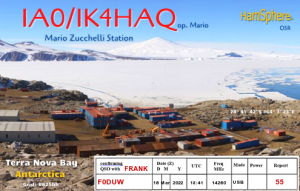
Among the various active virtual stations, there are some that operate remotely from the (simulated) positions of the Antarctic Bases and/or the Antarctic islands.
It is, -I repeat- only a simulation, not a real communications, therefore they are not valid for purposes such as Awards or recognition from the radio world, but only among the participants of the Hamsphere platform.
73’s Mario Fontanella IK4HAQ (ex IK3HAQ)
To our understanding and convinction, Ham Radio should not be a trick or a virtual game; a real DX contact, a real QSO especially with Antarctica must be struggled and perhaps suffered with a real radio, with a real antenna and not only with a PC or the desire to feel himself a virtual OM!
A motto says: The world is beautiful because it is varied! OK… varied, not spoiled!
 The measure is part of a newly published “Conservation Management Plan” (CMP). Already, no-one should retrieve or even touch objects in the protected zone. Everything must be left in situ.
The measure is part of a newly published “Conservation Management Plan” (CMP). Already, no-one should retrieve or even touch objects in the protected zone. Everything must be left in situ.
 George Island by air.
George Island by air. coexist in this place where the development of science is the priority. Uruguay is present in the area and has been part of the Antarctic Treaty for 40 years. El País traveled to Antarctica in February 2024 to learn first-hand how the Artigas Antarctic Scientific Base works, who travels to that place, why Uruguay has a presence and how people live on this Continent.
coexist in this place where the development of science is the priority. Uruguay is present in the area and has been part of the Antarctic Treaty for 40 years. El País traveled to Antarctica in February 2024 to learn first-hand how the Artigas Antarctic Scientific Base works, who travels to that place, why Uruguay has a presence and how people live on this Continent. The author of this article tells one story from its rich history. Roald Amundsen is probably most famous for being the first to reach the South Pole in the ‘race’ against Robert Falcon Scott. Tragically, Scott and his companions died in their attempt. While they were still trudging through the snow, Amundsen had completed his mission and returned to his base camp, boarded his ship, Fram, and headed back to Hobart.
The author of this article tells one story from its rich history. Roald Amundsen is probably most famous for being the first to reach the South Pole in the ‘race’ against Robert Falcon Scott. Tragically, Scott and his companions died in their attempt. While they were still trudging through the snow, Amundsen had completed his mission and returned to his base camp, boarded his ship, Fram, and headed back to Hobart.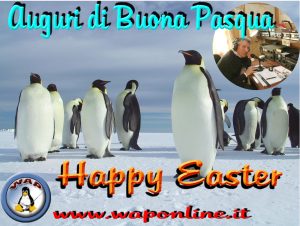
 Climate researchers on board the RRS Sir David Attenborough have described their latest polar expedition as “really successful”.
Climate researchers on board the RRS Sir David Attenborough have described their latest polar expedition as “really successful”. WAP Antarctic Bulletin nr. 302, released on Febr. 18th 2024 is available online with last info and reported activity from Antarctica.
WAP Antarctic Bulletin nr. 302, released on Febr. 18th 2024 is available online with last info and reported activity from Antarctica.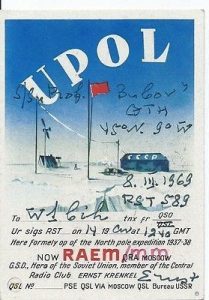 In the summer of 1924 Ernst Krenkel went to Leningrad with what little money he had saved, hoping to find employment as the radio operator on any ship undertaking a long voyage. At that time, only specially designated Soviet vessels went on long voyages, and in Leningrad there were already qualified naval radio operators without work. Just when Krenkel had given up all hope of finding work he was told that the hydrographic management bureau was in urgent need of a radio operator prepared to go on any expedition, to any island in the Arctic ocean. There was little interest because the pay was poor and it was necessary to be away for the whole year, living in ‘hellish’ conditions.
In the summer of 1924 Ernst Krenkel went to Leningrad with what little money he had saved, hoping to find employment as the radio operator on any ship undertaking a long voyage. At that time, only specially designated Soviet vessels went on long voyages, and in Leningrad there were already qualified naval radio operators without work. Just when Krenkel had given up all hope of finding work he was told that the hydrographic management bureau was in urgent need of a radio operator prepared to go on any expedition, to any island in the Arctic ocean. There was little interest because the pay was poor and it was necessary to be away for the whole year, living in ‘hellish’ conditions. wearing his new naval uniform he set off by train to Arkhangelsk (Archangel). On arrival he was assigned to the “ Yugorski Shar “ which was preparing to take the relief crew to the first Soviet polar observatory “Matochkin Shar”, constructed the year before on the northern coast of the Matochkin Shar strait of the Novaya Zemlya archipelago.
wearing his new naval uniform he set off by train to Arkhangelsk (Archangel). On arrival he was assigned to the “ Yugorski Shar “ which was preparing to take the relief crew to the first Soviet polar observatory “Matochkin Shar”, constructed the year before on the northern coast of the Matochkin Shar strait of the Novaya Zemlya archipelago. Ham radio was born in the USSR and Ernst Krenkel was delighted. Soon he was on-air using homebrew equipment, with the callsign EU2EQ (later U3AA).
Ham radio was born in the USSR and Ernst Krenkel was delighted. Soon he was on-air using homebrew equipment, with the callsign EU2EQ (later U3AA).
 Hi folks,
Hi folks,
 While waiting two years and three months to be rescued when their sloop Favorite was shipwrecked at Kerguelen in 1825, the British sealer and cartographer John Nunn and his crew spent some miserable months trying to survive on Saddle Island (now called Ile de l’Ouest) at 49°17’59” South, 70°31’56” East, buffeted by the merciless westerly winds.
While waiting two years and three months to be rescued when their sloop Favorite was shipwrecked at Kerguelen in 1825, the British sealer and cartographer John Nunn and his crew spent some miserable months trying to survive on Saddle Island (now called Ile de l’Ouest) at 49°17’59” South, 70°31’56” East, buffeted by the merciless westerly winds. The group was finally spotted in 1827 by Captain Alexander Distant on the schooner Sprightly, belonging to the celebrated shipowner Enderby of London. Nunn and his crewmates joined the Sprightly in hunting whales and elephant seals until 25 March 1829, at which point they were finally returned to Harwich, England four years after the shipwreck.
The group was finally spotted in 1827 by Captain Alexander Distant on the schooner Sprightly, belonging to the celebrated shipowner Enderby of London. Nunn and his crewmates joined the Sprightly in hunting whales and elephant seals until 25 March 1829, at which point they were finally returned to Harwich, England four years after the shipwreck. Interesting is the chart provided by
Interesting is the chart provided by 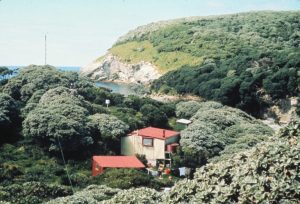
 WAP wish the readers a Wonderful Easter time
WAP wish the readers a Wonderful Easter time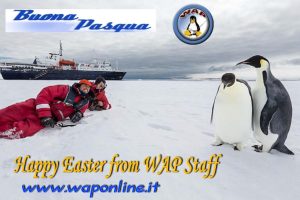
 Valery Sushkov RW3GW is an Old Timer DXpeditionner and actual President of the Russian Robinson Club (
Valery Sushkov RW3GW is an Old Timer DXpeditionner and actual President of the Russian Robinson Club (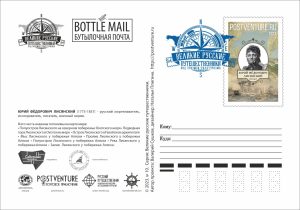 Society, Society for the Study of the Amur Territory, member of the Union of Journalists of Russia, laureate of the National Prizes of the Russian Geographical Society “Crystal Compass”
Society, Society for the Study of the Amur Territory, member of the Union of Journalists of Russia, laureate of the National Prizes of the Russian Geographical Society “Crystal Compass” The Replica Museum is a boutique, world class museum providing visitors with the opportunity to learn and understand the history and achievements of the men of the 1911-14 Australasian Antarctic Expedition led by Douglas Mawson.
The Replica Museum is a boutique, world class museum providing visitors with the opportunity to learn and understand the history and achievements of the men of the 1911-14 Australasian Antarctic Expedition led by Douglas Mawson. Project Blizzard aimed to increase public awareness of Australia’s involvement in Antarctica and, in doing so, conserve Mawson’s Huts. In particular, viewed the scientific work, including meteorological, biological, geological and magnetic research of the AAE, as significant. The organization immediately began to look for financial support from the community, hoping to raise capital for a privately-funded Antarctic expedition. The campaign used the slogan ‘Buy a board for Mawson’s Hut’.
Project Blizzard aimed to increase public awareness of Australia’s involvement in Antarctica and, in doing so, conserve Mawson’s Huts. In particular, viewed the scientific work, including meteorological, biological, geological and magnetic research of the AAE, as significant. The organization immediately began to look for financial support from the community, hoping to raise capital for a privately-funded Antarctic expedition. The campaign used the slogan ‘Buy a board for Mawson’s Hut’. In 1985/86, they focused on stabilising the internal platform of the Main Hut, which had partly collapsed under the load of snow ingress, using metal and timber props. This work involved an associated archaeological excavation program in areas disturbed for the works.
In 1985/86, they focused on stabilising the internal platform of the Main Hut, which had partly collapsed under the load of snow ingress, using metal and timber props. This work involved an associated archaeological excavation program in areas disturbed for the works. After six days of activities on the White Continent, a new version of the Antarctic School Expedition (EAE) organized by the Chilean Antarctic Institute (
After six days of activities on the White Continent, a new version of the Antarctic School Expedition (EAE) organized by the Chilean Antarctic Institute (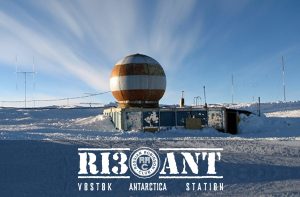 To celebrate the 30th Anniversary of Russian Robinson Club (RRC) a Special callsign RI3ØANT will operate from Vostok Base (
To celebrate the 30th Anniversary of Russian Robinson Club (RRC) a Special callsign RI3ØANT will operate from Vostok Base (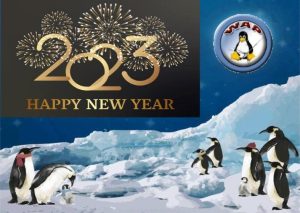
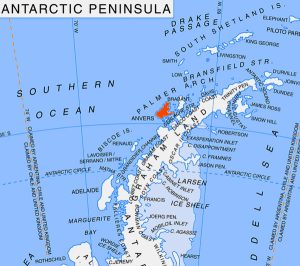 The larval health of an Antarctic cold-water coral species may be resistant to warming water temperatures, a University of Maine study finds, bringing new hope for the climate change resilience of deep-sea ecosystems in the Western Antarctic Peninsula.
The larval health of an Antarctic cold-water coral species may be resistant to warming water temperatures, a University of Maine study finds, bringing new hope for the climate change resilience of deep-sea ecosystems in the Western Antarctic Peninsula.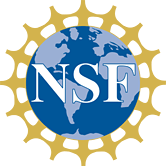 “Although their habitat is now changing faster than other places around the world, most marine animals in the Southern Ocean are thought to have a limited capacity to adapt to environmental shifts,” says Julia Johnstone, principal author of the study. “Especially during the larval stage, when developmental processes are organizing and laying the foundations for key life-long functions like prey capture and growth, those environmental changes can have an outsize impact.”
“Although their habitat is now changing faster than other places around the world, most marine animals in the Southern Ocean are thought to have a limited capacity to adapt to environmental shifts,” says Julia Johnstone, principal author of the study. “Especially during the larval stage, when developmental processes are organizing and laying the foundations for key life-long functions like prey capture and growth, those environmental changes can have an outsize impact.” Monday August 16 , 897. The port of Antwerp is filled with people. The National Anthem is being played, canon shots of joy are heard across the River. The Belgica leaves the harbour, setting sail to Antarctica. Other than a lost whaler, there has never been a soul nearby…
Monday August 16 , 897. The port of Antwerp is filled with people. The National Anthem is being played, canon shots of joy are heard across the River. The Belgica leaves the harbour, setting sail to Antarctica. Other than a lost whaler, there has never been a soul nearby… The Belgian Antarctic Expedition of 1897–1899 was the first expedition to winter in the Antarctic region. Led by Adrien de Gerlache de Gomery aboard the R/V Belgica, it was the first Belgian Antarctic expedition and is considered the first expedition of the Heroic Age of Antarctic Exploration. Among its members were Frederick Cook and Roald Amundsen, explorers who would later attempt the respective conquests of the North and South Poles.
The Belgian Antarctic Expedition of 1897–1899 was the first expedition to winter in the Antarctic region. Led by Adrien de Gerlache de Gomery aboard the R/V Belgica, it was the first Belgian Antarctic expedition and is considered the first expedition of the Heroic Age of Antarctic Exploration. Among its members were Frederick Cook and Roald Amundsen, explorers who would later attempt the respective conquests of the North and South Poles.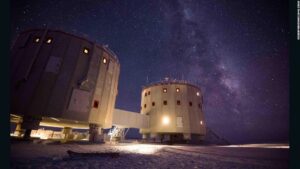 ESA-sponsored medical doctor Hannes Hagson snapped this picture from the Station’s front door in early on 5 August. “Time here has the strange quality of both passing really quickly and very slowly at the same time,” he shared, “and in just two days we expect the return of the sun to grace us here at 75 degrees south! The returning daylight certainly has us all cheered up and starting to sense the beginning of the final part of this adventure.”
ESA-sponsored medical doctor Hannes Hagson snapped this picture from the Station’s front door in early on 5 August. “Time here has the strange quality of both passing really quickly and very slowly at the same time,” he shared, “and in just two days we expect the return of the sun to grace us here at 75 degrees south! The returning daylight certainly has us all cheered up and starting to sense the beginning of the final part of this adventure.” Of course, it’s not all fun and games. Hannes has been busy with biomedical research, as he continues to gather data from crew urine, stool and blood samples, as well as cognitive and psychological measures through questionnaires to study the effects of isolated, confined and extreme environments on the human body.
Of course, it’s not all fun and games. Hannes has been busy with biomedical research, as he continues to gather data from crew urine, stool and blood samples, as well as cognitive and psychological measures through questionnaires to study the effects of isolated, confined and extreme environments on the human body. Something interesting has been publish recently on the web. Here an abstract:
Something interesting has been publish recently on the web. Here an abstract: 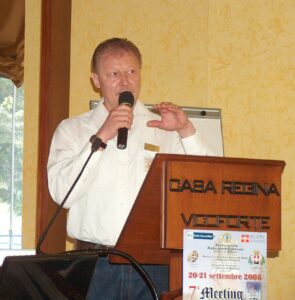 A very interesting pubblication, signed by Dr. Volker Strecke, DL8JDX, Antarctic veteran has been recentry pubblished on the german journal
A very interesting pubblication, signed by Dr. Volker Strecke, DL8JDX, Antarctic veteran has been recentry pubblished on the german journal 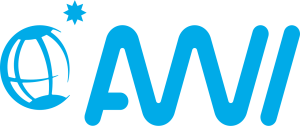
 Now, for the first time, a research team has been able to show systematically that the fin whale population is recovering. The findings were published in the journal Scientific Reports.
Now, for the first time, a research team has been able to show systematically that the fin whale population is recovering. The findings were published in the journal Scientific Reports.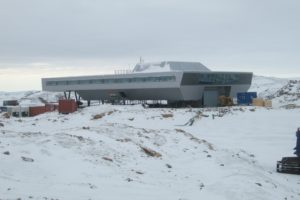 The Bill is introduced to “provide for the national measures for protecting the Antarctic environment and dependent and associated ecosystems and to give effect to the Antarctic Treaty, the Convention on the Conservation of Antarctic Marine Living Resources and to the Protocol on Environmental Protection to the Antarctic Treaty and for matters connected therewith or incidental thereto”.
The Bill is introduced to “provide for the national measures for protecting the Antarctic environment and dependent and associated ecosystems and to give effect to the Antarctic Treaty, the Convention on the Conservation of Antarctic Marine Living Resources and to the Protocol on Environmental Protection to the Antarctic Treaty and for matters connected therewith or incidental thereto”. India signed the Antarctic Treaty on August 19, 1983, and was soon granted the observer status on September 12, 1983. The protocol entered into force for India on January 14, 1998. India has active research stations Maitri (
India signed the Antarctic Treaty on August 19, 1983, and was soon granted the observer status on September 12, 1983. The protocol entered into force for India on January 14, 1998. India has active research stations Maitri ( After months of preparation, a crew of 12 scientists, explorers, and staff at Europe’s Concordia Research Station in Antarctica (
After months of preparation, a crew of 12 scientists, explorers, and staff at Europe’s Concordia Research Station in Antarctica (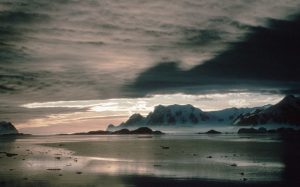 Clouds come in myriad shapes, sizes and types, which control their effects on climate. New research led by the University of Washington shows that the splintering of frozen liquid droplets to form ice shards inside Southern Ocean clouds dramatically affects the clouds’ ability to reflect sunlight back to space.
Clouds come in myriad shapes, sizes and types, which control their effects on climate. New research led by the University of Washington shows that the splintering of frozen liquid droplets to form ice shards inside Southern Ocean clouds dramatically affects the clouds’ ability to reflect sunlight back to space.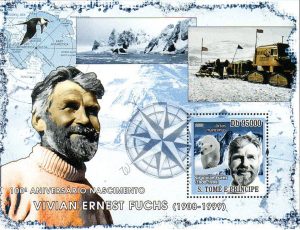 Sir Vivian Ernest Fuchs (11 February 1908 – 11 November 1999) was an English explorer. Fuchs is best known as the leader of the Commonwealth Trans-Antarctic Expedition, a Commonwealth-sponsored expedition that completed the first overland crossing of Antarctica via the South Pole in 1958
Sir Vivian Ernest Fuchs (11 February 1908 – 11 November 1999) was an English explorer. Fuchs is best known as the leader of the Commonwealth Trans-Antarctic Expedition, a Commonwealth-sponsored expedition that completed the first overland crossing of Antarctica via the South Pole in 1958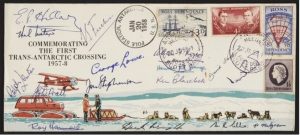 In 1958, Fuchs was knighted by Queen Elizabeth II. He co-wrote, with Sir Edmund Hillary The Crossing of Antarctica. In 1959 he was awarded the Hans Edge Medal by the Royal Danish Geographical Society.
In 1958, Fuchs was knighted by Queen Elizabeth II. He co-wrote, with Sir Edmund Hillary The Crossing of Antarctica. In 1959 he was awarded the Hans Edge Medal by the Royal Danish Geographical Society.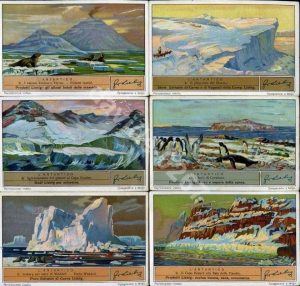 A friend, sent
A friend, sent 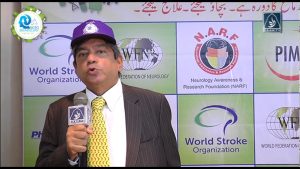 Professor Arif Herekar, Professor of Neurology together with excelling in his professional duties is a passionate traveller and globe trotter. He happens to be one of the few Pakistanis to step on to the Antarctic soil, probably the only Pakistani certified as an Antarctic naval seal camping on the Antarctic continent has made this beautiful country Pakistan proud by hoisting the national flag on the Antarctic soil.
Professor Arif Herekar, Professor of Neurology together with excelling in his professional duties is a passionate traveller and globe trotter. He happens to be one of the few Pakistanis to step on to the Antarctic soil, probably the only Pakistani certified as an Antarctic naval seal camping on the Antarctic continent has made this beautiful country Pakistan proud by hoisting the national flag on the Antarctic soil. While on April 25th the world celebrates the penguins, it’s also a time to think about saving them. Many penguin colonies have been lost to climate change and it’s estimated that half the population of emperor penguins will vanish by the end of this century.
While on April 25th the world celebrates the penguins, it’s also a time to think about saving them. Many penguin colonies have been lost to climate change and it’s estimated that half the population of emperor penguins will vanish by the end of this century.
 The TX and antenna are for exemple, located in Antarctica but the operator is, for exemple, in Paris. The propagation in Antarctica will be the same of real Amateur Radio. We have dirctional antenna and 100 watts.
The TX and antenna are for exemple, located in Antarctica but the operator is, for exemple, in Paris. The propagation in Antarctica will be the same of real Amateur Radio. We have dirctional antenna and 100 watts. We personally didn’t know that, and now we understood that HamSphere is a subscription-based internet service which simulates Amteur Radio communication over the Internet as designed by Kelly Lindman, 5B4AIT.
We personally didn’t know that, and now we understood that HamSphere is a subscription-based internet service which simulates Amteur Radio communication over the Internet as designed by Kelly Lindman, 5B4AIT.

 The small branch with its colors, gives hope to all hearts.
The small branch with its colors, gives hope to all hearts.  An old copy of “Il Collezionista” an Italian Philatelic Magazine (Jan. 1967) reports a bit of story of the famous Ship Scotia which was depicted on a stamp issued by the Falkland Islands, Scotia was also depicted on two stamps issued by the British Antarctic Territory.
An old copy of “Il Collezionista” an Italian Philatelic Magazine (Jan. 1967) reports a bit of story of the famous Ship Scotia which was depicted on a stamp issued by the Falkland Islands, Scotia was also depicted on two stamps issued by the British Antarctic Territory.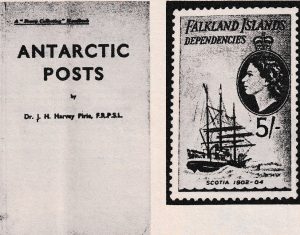 former medical student from University of Edinburg who organised and led the Scottish National Antarctic Expedition (SNAE) from 1902 to1904
former medical student from University of Edinburg who organised and led the Scottish National Antarctic Expedition (SNAE) from 1902 to1904 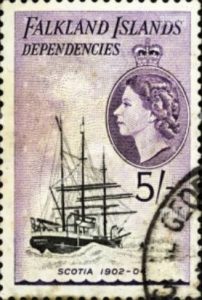 Scotia overwintered in Scotia Bay where she was frozen in for eight months. She departed for the Falkland Islands on 27 November en route for Buenos Aires, Argentina where she underwent a refit. Scotia returned to Laurie Island on 14 February 1904, sailing eight days later for the Weddel Sea. She departed from the Antarctic on 21 March. Calling at Saint Helena in June, she arrived at Millport, Cumbrae, Ayrishire on 21 July, and was escorted by a number of ships to her final destination of Gourock Renfrewshire.
Scotia overwintered in Scotia Bay where she was frozen in for eight months. She departed for the Falkland Islands on 27 November en route for Buenos Aires, Argentina where she underwent a refit. Scotia returned to Laurie Island on 14 February 1904, sailing eight days later for the Weddel Sea. She departed from the Antarctic on 21 March. Calling at Saint Helena in June, she arrived at Millport, Cumbrae, Ayrishire on 21 July, and was escorted by a number of ships to her final destination of Gourock Renfrewshire. On
On 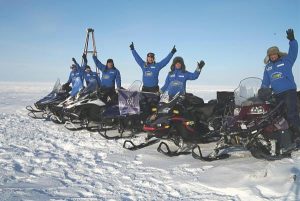 The polar snowmobile expedition R15ØWS from the
The polar snowmobile expedition R15ØWS from the 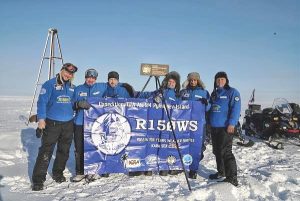 The Team, included Igor Znamensky UA9KDF (Tarko-Sale, YNAO), Andrey Korobeinikov UA9LDD (Tyumen), Andrey Moiseev UAØBA (Norilsk), Viktor Kuzyakin RWØBG (Norilsk), Alexey Bystrov RT9K (Dudinka) and Andrey Prudnikov RT9K (Surgut) did travel 2980 km on snowmobiles to the island and back. During four days of work on air R15ØWS made 5635 QSOs. Of these: CW – 3294, SSB – 1323, FT8 – 1018, 20m – 2878, 30m – 609, 40m – 489, 15m – 570, 12m – 8, 17m – 1072.
The Team, included Igor Znamensky UA9KDF (Tarko-Sale, YNAO), Andrey Korobeinikov UA9LDD (Tyumen), Andrey Moiseev UAØBA (Norilsk), Viktor Kuzyakin RWØBG (Norilsk), Alexey Bystrov RT9K (Dudinka) and Andrey Prudnikov RT9K (Surgut) did travel 2980 km on snowmobiles to the island and back. During four days of work on air R15ØWS made 5635 QSOs. Of these: CW – 3294, SSB – 1323, FT8 – 1018, 20m – 2878, 30m – 609, 40m – 489, 15m – 570, 12m – 8, 17m – 1072. Rykachev, Director of the main geophysical observatory, in honor of the 150th anniversary of the creation of the Russian weather service,
Rykachev, Director of the main geophysical observatory, in honor of the 150th anniversary of the creation of the Russian weather service,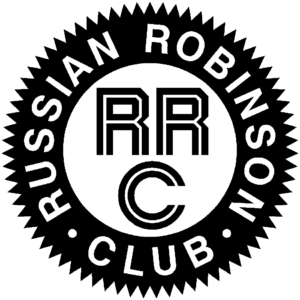
 This event is completely unprecedented and upended our expectations about the Antarctic climate system,’ one expert said
This event is completely unprecedented and upended our expectations about the Antarctic climate system,’ one expert said (WAP RUS-14)— at the center of the eastern ice sheet — is around minus-63 (minus-53 Celsius) in March. But on Friday, the temperature leaped to zero (minus-17.7 Celsius), the warmest it’s been there during March since record keeping began 65 years ago. It broke the previous monthly record by a staggering 27 degrees (15 Celsius).
(WAP RUS-14)— at the center of the eastern ice sheet — is around minus-63 (minus-53 Celsius) in March. But on Friday, the temperature leaped to zero (minus-17.7 Celsius), the warmest it’s been there during March since record keeping began 65 years ago. It broke the previous monthly record by a staggering 27 degrees (15 Celsius).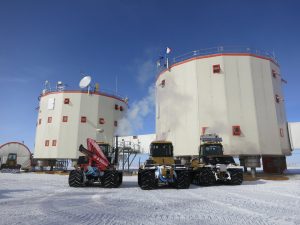 Vostok, a Russian meteorological observatory, is about 808 miles from the South Pole and sits 11,444 feet above sea level. It’s famous for holding the lowest temperature ever observed on Earth: minus-128.6 degrees (minus-89.2 Celsius), set on July 21, 1983.
Vostok, a Russian meteorological observatory, is about 808 miles from the South Pole and sits 11,444 feet above sea level. It’s famous for holding the lowest temperature ever observed on Earth: minus-128.6 degrees (minus-89.2 Celsius), set on July 21, 1983.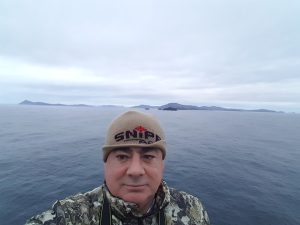 From Cap. Eduardo Abril de Fontcuberta EA4GKV/EO4HAG WAP-242
From Cap. Eduardo Abril de Fontcuberta EA4GKV/EO4HAG WAP-242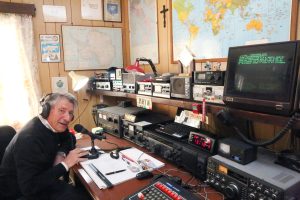 From Gianni I1HYW/IR1ANT WAP ØØ2
From Gianni I1HYW/IR1ANT WAP ØØ2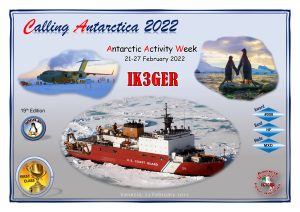
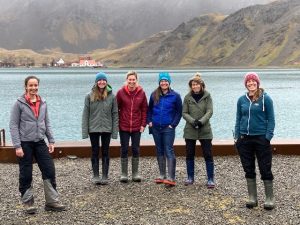
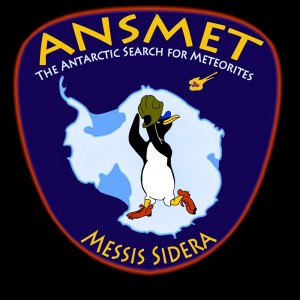 The Antarctic Search for Meteorites program (ANSMET) is a US-led field-based science project that recovers meteorite specimens from Antarctica. Since 1976 we have recovered more than 22,000 specimens from meteorite stranding surfaces along the Transantarctic Mountains. These specimens are a reliable, continuous source of new, non-microscopic extraterrestrial material and support thousands of scientists from around the globs as they seek essential “ground-truth” concerning the materials that make up the asteroids, planets and other bodies of our solar system. The study of ANSMET meteorites has greatly extended our knowledge of the materials and conditions in the primeval nebula from which our solar system was born, revealed the complex and exotic geologic nature of asteroids, and proved, against the conventional wisdom, that some specimens represent planetary materials, delivered to us from the Moon and Mars, free of charge.
The Antarctic Search for Meteorites program (ANSMET) is a US-led field-based science project that recovers meteorite specimens from Antarctica. Since 1976 we have recovered more than 22,000 specimens from meteorite stranding surfaces along the Transantarctic Mountains. These specimens are a reliable, continuous source of new, non-microscopic extraterrestrial material and support thousands of scientists from around the globs as they seek essential “ground-truth” concerning the materials that make up the asteroids, planets and other bodies of our solar system. The study of ANSMET meteorites has greatly extended our knowledge of the materials and conditions in the primeval nebula from which our solar system was born, revealed the complex and exotic geologic nature of asteroids, and proved, against the conventional wisdom, that some specimens represent planetary materials, delivered to us from the Moon and Mars, free of charge.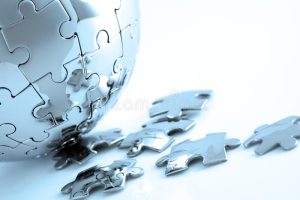 A Team of Thirty-two scientists are sailing to “the place in the world that’s the hardest to get to” so they can better figure out how much and how fast seas will rise because of global warming eating away at Antarctica’s ice.
A Team of Thirty-two scientists are sailing to “the place in the world that’s the hardest to get to” so they can better figure out how much and how fast seas will rise because of global warming eating away at Antarctica’s ice. Marking International Women’s Day, Antarctic experts will share extraordinary untold stories from the icy continent’s past. Join UK Antarctic Heritage Trust on Tuesday 8th March for Untold Stories of Antarctica.
Marking International Women’s Day, Antarctic experts will share extraordinary untold stories from the icy continent’s past. Join UK Antarctic Heritage Trust on Tuesday 8th March for Untold Stories of Antarctica.  Morag Seag, a PhD candidate at the University of Cambridge, will tell the story of women’s integration into Antarctic field science in the mid-twentieth century. Amelia Urry, also a PhD candidate at the University of Cambridge, will share stories of the women behind Antarctic mapping in the 1950s.
Morag Seag, a PhD candidate at the University of Cambridge, will tell the story of women’s integration into Antarctic field science in the mid-twentieth century. Amelia Urry, also a PhD candidate at the University of Cambridge, will share stories of the women behind Antarctic mapping in the 1950s. Deutsche Briefmarken-Zeitung (
Deutsche Briefmarken-Zeitung ( The article includes a copy of Danilo’s QSL and the stamp dedicated to the Italian scientist Mario Zucchelli (1944 – 2003), for years a reference figure for the Italian Antarctic Program.
The article includes a copy of Danilo’s QSL and the stamp dedicated to the Italian scientist Mario Zucchelli (1944 – 2003), for years a reference figure for the Italian Antarctic Program. background.
background.
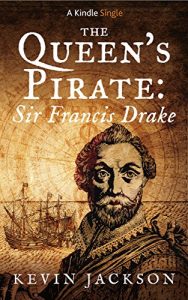 The legend of El Dorado around the South Pole has fascinated many Europeans since Sir Francis Drake. On the first day of 1739, the looked at the cloudy, foggy and ice-bound coast – the one that would later be called Bouvet Island. Then he returned home with a description of majestic icebergs and black-and-white penguins that looked like «large ducks, but with fins instead of wings».
The legend of El Dorado around the South Pole has fascinated many Europeans since Sir Francis Drake. On the first day of 1739, the looked at the cloudy, foggy and ice-bound coast – the one that would later be called Bouvet Island. Then he returned home with a description of majestic icebergs and black-and-white penguins that looked like «large ducks, but with fins instead of wings».
 unknown to science. Scientists say this is the furthest south the species has ever been seen in this part of Antarctica, and posit their presence here to the impacts of climate change.
unknown to science. Scientists say this is the furthest south the species has ever been seen in this part of Antarctica, and posit their presence here to the impacts of climate change.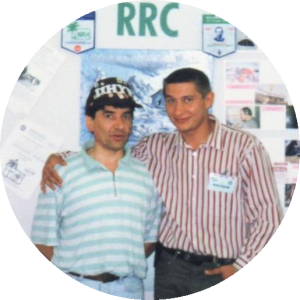
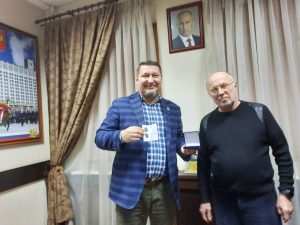 The award was presented to Valery Sushkov RMØL by the head of the organizing committee of the project
The award was presented to Valery Sushkov RMØL by the head of the organizing committee of the project 
 Kit. The obverse of the medal exactly copies the original, made by order of Emperor Alexander I for the expedition teams of Thaddeus Bellingshausen and Mikhail Lazarev. On the reverse is a dedication to the circumnavigation of the sailing ships Kruzenshtern, Sedov and Pallada.
Kit. The obverse of the medal exactly copies the original, made by order of Emperor Alexander I for the expedition teams of Thaddeus Bellingshausen and Mikhail Lazarev. On the reverse is a dedication to the circumnavigation of the sailing ships Kruzenshtern, Sedov and Pallada.
 An interesting view of the six landmarks have been published on Newstalk ZB, by Thomas Bywater, NZ Herald.
An interesting view of the six landmarks have been published on Newstalk ZB, by Thomas Bywater, NZ Herald.